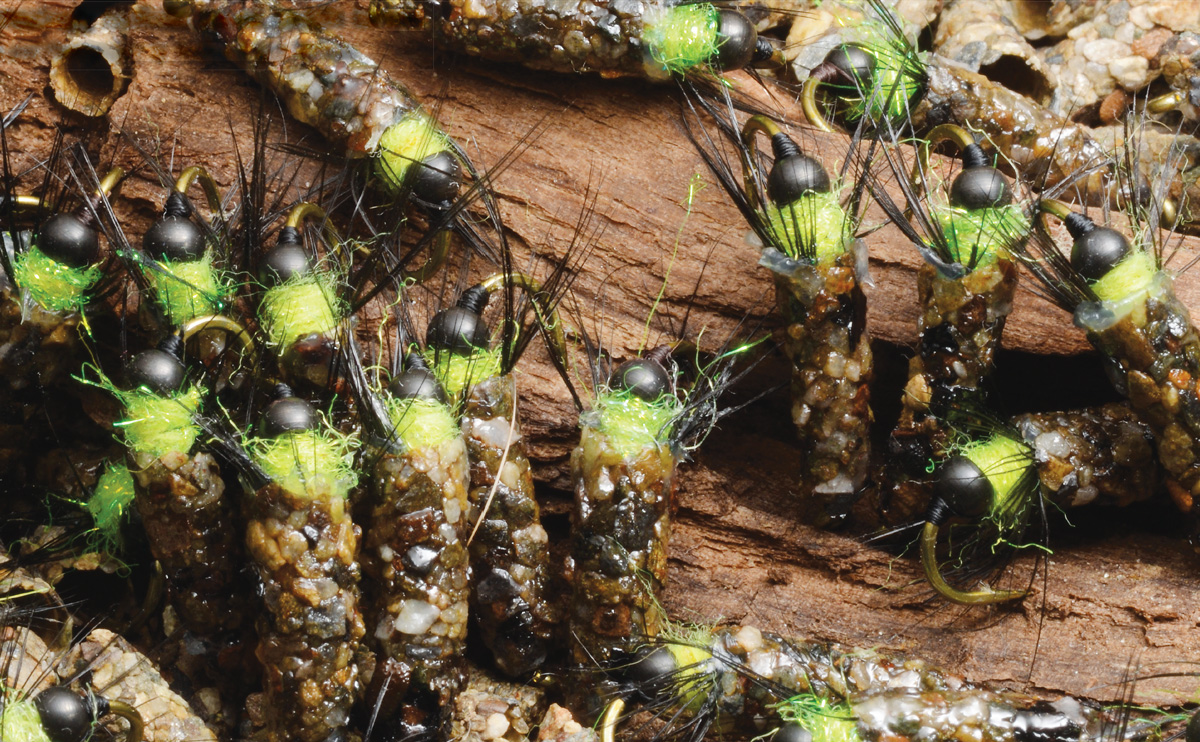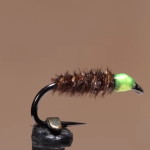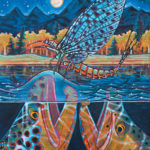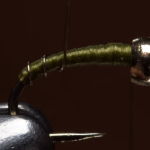Beadhead Cased Caddis-THE REAL DEAL
Hook: 2X-long nymph hook, sizes 14 to 8.
Thread: Brown 8/0 (70 denier).
Head: Black bead.
Weight: Lead wire.
Thorax: Fluorescent green dubbing.
Legs: Black cock saddle feather
Case: A real discarded caddis case, or dried sand and grit from your local stream.
More stuff: Clear silicone and varnish.
Making the Beadhead Cased Caddis
The Real Deal
Fly tiers use hare’s fur, deer hair, densely wrapped hackle—all trimmed to the appropriate shape—to imitate caddis larva cases. The ideal ingredients, however, are the very materials the insects use to build cases.
We use real discarded caddisfly cases for making flies. We’re not kidding! Pick up a few rocks and pluck off the cases; in no time you’ll have a bunch of real cases. Slip the cases into a plastic bag and store them in your vest. When you get home, lightly wash off the cases in a small bowl of water, and lay them on a paper towel to dry.
An alternative is to use sand and grit obtained from the rivers you fish. Toss a small amount of material in a bowl to dry, and store it for tying. With respect to size, use sand and hook sizes to match the most common casebuilding larvae in your local waters. For example, use fine sand and hook size 14 or 12 when imitating Leptoceridae larvae, and select slightly coarser sand and hook size 10 or 8 when tying imitations of Limnephilus. You do not, however, have to worry about the exact species of larvae living in your streams; just note the size of the cases and material used to build those structures.

Making a case using loose sand is simple. First, tie the head and legs of the fly, and wrap lead wire on the hook. Next, wrap a slender underbody using rabbit or another form of dubbing. Tie off and clip the thread. Next, coat the underbody with silicone and roll the fly in sand. Allow the glue to dry, and coat the case with varnish.
The bead, lead wire, and sand case give the Beadhead Cased Caddis maximum weight, and none of these mateials retain air; very few other flies of this size sink as quickly. The Beadhead Cased Caddis will reach the deepest spots where the larger fish usually wait to intercept their prey. A silicone interior and exterior coat of varnish give the case durability and prevent the little stones from falling off.
Making imitations of case-building caddis larvae is both fun and educational. In addition to adding a new method to your fly-tying repertoire, you will want to spend some time on the water studying real caddisfly larvae. You’ll become a better tier, have a greater knowledge of your local streams and rivers, and catch more fish.
Nadica and Igor Stancev are regular contributors to our magazine. They are world renowned for tying realisitic fishing imitations. Nadica and Igor live in Macedonia.









